Description
Officially known as the “Corps of Discovery”, the Lewis & Clark Expedition began in 1804
and continued through 1806. Led by Meriwether Lewis and William Clark, it’s purpose
was to map out new land from the Missouri River to the Pacific Ocean and also to
establish peace among the native tribes. Private John Shields was taken along as their
blacksmith to make metal items for the native tribes for trade and to establish trust.
Hand-forged wrought iron head with lap-welded eye featuring 3 punched holes in the
blade with faint dots around these holes; stamped with “JS” maker’s mark (John Shields).
Old haft, possibly original, featuring leather wrap with brass tacks and small beaded drop
made of old trade beads. Old brass shank tacks plus leather fringe drops at the haft eye;
old square nails securing the head. Museum catalog numbers can be found on bottom of
haft. Head measures 12 1/4″ L, 3 1/4″ W. Length with haft 17 inches. This spontoon
tomahawk is similar to Meriwether’s sketch (see photos) in his journal while wintering
among the Mandans. This spontoon tomahawk was once in a Washington State museum
and later obtained from the Jim Dresselar Collection of rare historical relics. It is featured
in Lar Hothem’s “Rare and Unusual Indian Artifacts” p. 263. Very possible that Shields
forged this rare and historic spontoon tomahawk while wintering among the Mandans.

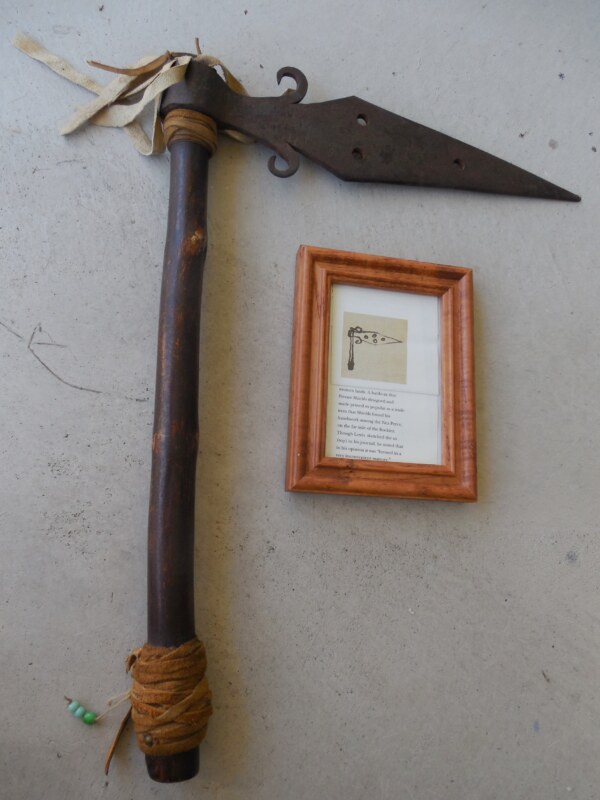



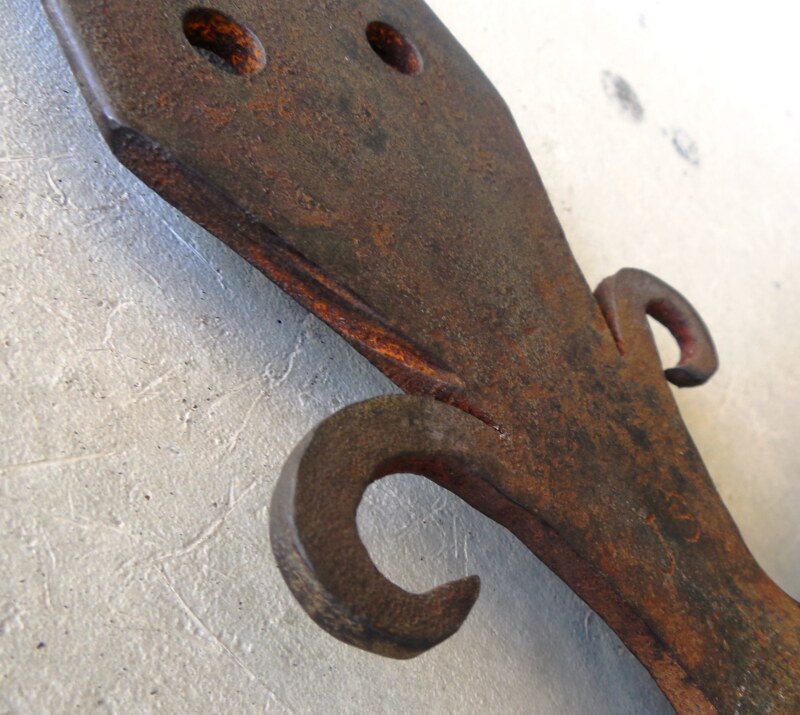









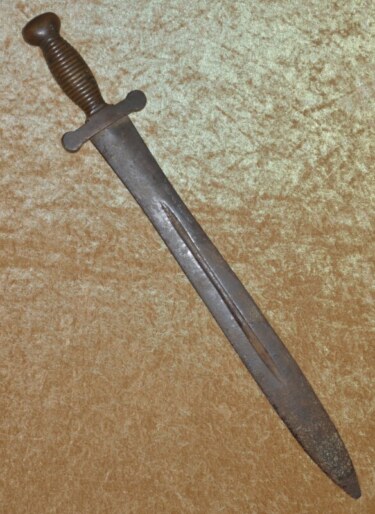 Scarce Confederate Artillery Short Sword by Boyle, Gamble, & McFee
Scarce Confederate Artillery Short Sword by Boyle, Gamble, & McFee 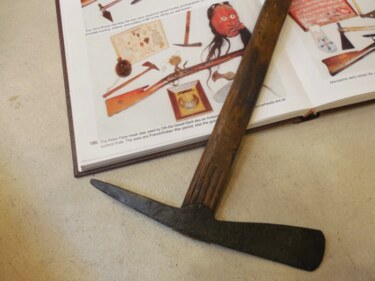 French and Indian Wars/Revolutionary War Era Spiked Tomahawk
French and Indian Wars/Revolutionary War Era Spiked Tomahawk 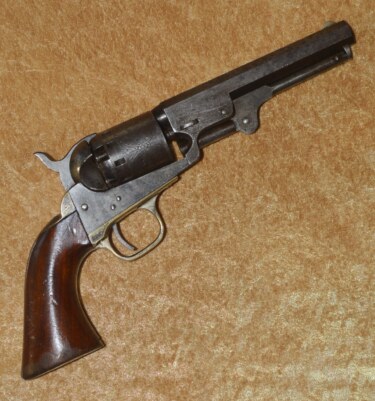 Manhattan Series II Navy Percussion Revolver
Manhattan Series II Navy Percussion Revolver 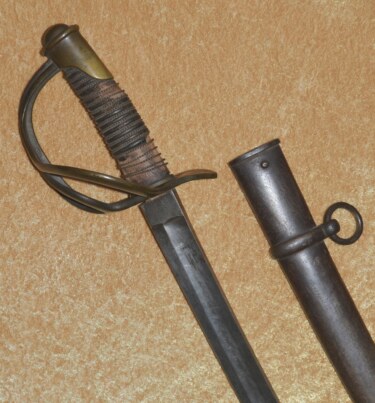 US M1840 Cavalry Saber
US M1840 Cavalry Saber